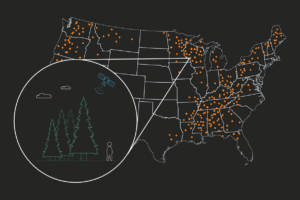A recent Wall Street Journal opinion piece called “Forests: Good Intentions but Mixed Results,” laid out some common misconceptions of forest carbon projects. Contrary to the authors’ assertions, forest offsets do create real, immediate, scalable, and efficient carbon sequestration opportunities. Such nature-based solutions are broadly accepted as one of our first best options to begin to remove carbon from the atmosphere as we move quickly towards a decarbonized economy. You can also dive deeper into each of these concepts in our “Guide to Forest Carbon” white paper.
Misconception 1
“…most if not all large-scale forest-based carbon projects are paying forest landowners to do something that they are already doing, thus failing to meet the “additionality” criterion.”
To ensure that a forest carbon project is creating real change, you first need to understand the “business as usual” scenario for the specific acres where that project is taking place. These can vary widely: forests in the interior of Alaska have a very different business as usual than pine plantations in the Southern US. The Alaskan forests may suck up a huge amount of carbon year over year, but are hard to access and don’t have a lot of nearby markets — meaning they’re not at high risk of being cut down. As a result, paying to defer harvest on those trees won’t do us much “additional” good.
Assessing the likelihood that any given section of forest may be cut in the near future is an important part of a forest carbon program. But this isn’t a new problem. Banks and insurers have dealt with adverse selection for a long time — in fact they’ve made a business of it. Assessment of additionality can be done poorly — as Mr. Sonnenfeld suggests — but it can also be done well, by using more precise information. This argument is like saying banks aren’t able to make loans because it’s impossible to predict who will pay them back: it’s simply not true. Read more about this well understood issue here.
Read the full article on Zack’s LinkedIn here.



